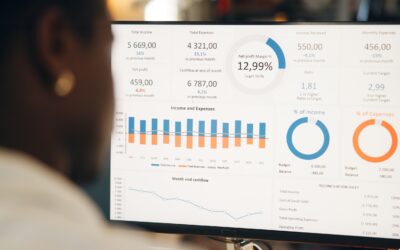\When “Data-Driven” Becomes “Data-Drowned”
Every nonprofit loves to say they’re data-driven. But most? They’re data-drowning. You’ve got spreadsheets in five formats, dashboards nobody checks, and reports that get emailed to the board… but never change a single decision.
That’s the danger of modern analytics. We confuse having data with using it. Collecting numbers is easy. Acting on them—that’s the art.
This isn’t about more tools or prettier dashboards. It’s about building a *decision culture*—one where data actually drives behavior. And the payoff? Faster pivots, smarter campaigns, and a team that makes choices with clarity instead of guesswork.
Why Most Nonprofits Struggle With Data in the First Place
Nonprofits sit in a strange tension: too much data, too little time. Every system—your CRM, email platform, donor management software—spits out numbers. But without context, they’re noise.
So instead of clarity, you get analysis paralysis. Everyone’s staring at charts, arguing about metrics, but nobody’s moving forward.
The issue isn’t that your organization doesn’t have enough data. It’s that you don’t have a system to translate it into decisions.
The Three Levels of Data Maturity
You can tell where a nonprofit sits on the data maturity curve by how they talk about their metrics.
- Level 1: Data Curious. You track things sporadically. Maybe someone runs a donor report once a quarter. But insights never make it into your day-to-day work.
- Level 2: Data Aware. You’ve got dashboards and KPIs. The board sees pretty charts. But they rarely trigger meaningful changes.
- Level 3: Data Operationalized. Data drives decisions. Your team doesn’t just report on outcomes—they *respond* to them in real time.
The goal? Move from awareness to action. That’s where the leverage lives.
Start Small, Act Fast
Here’s the truth: the smaller the data pilot, the faster you see results. Pick one slice of your organization—like donor retention or campaign performance—and build a feedback loop there.
Let’s say you notice monthly donor churn is rising. Instead of drowning in diagnostics, act. Run a short reactivation campaign. See what works. Feed that learning back into the system.
That’s operationalization in action. The loop looks like this:
- Collect data → Spot the pattern → Act → Measure the result → Refine and repeat.
It’s not sexy, but it works.
Turn Dashboards Into Decision Boards
Dashboards are great for looking at the past. But unless they change what you do next, they’re digital wallpaper.
Every dashboard should answer three questions:
- What’s happening right now?
- Why is it happening?
- What do we do about it?
If your reports don’t lead to clear actions, simplify them. Less is more. A two-metric dashboard that drives one smart decision beats a 20-page report nobody reads.
If you’re new to structuring metrics, Nonprofit Analytics 101 is a good starting point. It breaks down what to track, how to interpret it, and when to actually act on it.
Stop Measuring Everything. Measure What Matters.
Here’s a controversial truth: not every metric deserves to live.
You don’t need fifty KPIs. You need five.
Pick metrics that tie directly to your mission outcomes and fundraising goals. If the data doesn’t connect to action, it’s clutter.
Examples that actually move the needle:
- Retention rate (Are people sticking around?)
- Average gift growth (Is loyalty deepening?)
- Time to second gift (Are new donors re-engaging quickly?)
- Recurring donor percentage (Is predictable revenue increasing?)
- Campaign ROI (Are you spending smarter each time?)
That’s it. Everything else can go in the “nice-to-know” pile.
Operationalizing Data Is About People, Not Platforms
Here’s the twist: operationalizing data isn’t a technical problem. It’s cultural.
The tech is fine—your team’s behavior isn’t.
Ask yourself:
- Does staff actually use data before making decisions?
- Are meetings focused on learning, or on defending past choices?
- Do leaders model curiosity—or just demand reports?
If your people don’t trust or understand the data, no dashboard will fix it.
Start by training for data fluency, not data literacy. Fluency means your team knows *when* to use data, not just *how* to read it.
Predictive Analytics: From Reporting to Anticipating
Most nonprofits live in reaction mode. Predictive analytics flips that script. Instead of asking, “What happened?” you start asking, “What’s likely to happen next?”
That’s where real operational power comes from. You stop chasing fires and start preventing them.
Predictive analytics uses your existing donor data—gift timing, frequency, engagement—to forecast trends and behaviors. It doesn’t need to be complicated. Start small.
If you want a deeper dive into forecasting methods that nonprofits can actually use, check out Predictive Analytics for Nonprofits. It’s the roadmap for using forward-looking insights without needing a data science team.
Embed Data Into Daily Rituals
Operationalization means your data becomes part of your rhythm—not an afterthought.
Build routines around it:
- Weekly: Review one actionable metric in your team meeting. What changed? Why?
- Monthly: Run a quick donor health check. Which segments are growing? Which are at risk?
- Quarterly: Pick one insight to test. A new email format. A new giving prompt. Then document the result.
Data isn’t just for reports—it’s for rhythm. When your team starts treating analytics like a habit, not a project, your culture changes.
The Danger of Data Theater
Be careful not to turn data into a performance. “Data theater” happens when you make beautiful reports with zero impact. You celebrate the process of measurement instead of the progress it should create.
If your team spends more time formatting charts than making decisions, you’ve fallen into the trap. Kill the slides. Focus on outcomes.
Operational data isn’t a PowerPoint—it’s a compass.
Build Feedback Loops Into Everything
Real data maturity shows up in how quickly you can adjust. Every campaign, every message, every event should create a feedback loop.
Example:
- Run a giving campaign →
- Track donor response times →
- Adjust your next send window →
- Watch the lift in conversions →
- Feed that learning back into planning.
That loop is your engine. The faster it spins, the more adaptive your nonprofit becomes. That’s operationalization in real life—not more meetings, just tighter loops.
Leadership’s Role: Make Data Safe to Use
Leaders often love asking for “data-based decisions” until the data challenges their assumptions. That’s when teams stop being honest.
The best leaders make data safe. They frame it as feedback, not judgment. They say, “Let’s learn from this,” not “Who messed up?”
When you create a culture of curiosity, your data finally becomes useful. You can’t operationalize what people are afraid to discuss.
How to Know You’re Getting It Right
You’ll know your nonprofit is operationalizing data when:
- Staff reference data naturally in meetings.
- Campaigns adjust mid-flight, not post-mortem.
- Dashboards actually influence decisions.
- Predictive forecasts start replacing reactive fixes.
- Reports get shorter—but smarter.
When your culture starts treating analytics like oxygen, not obligation, you’re no longer “using data.” You’re *powered by it.*
The Last Word: Clarity Beats Complexity
You don’t need bigger databases or fancier dashboards. You need clarity. The goal isn’t to analyze everything—it’s to understand the few things that drive impact.
Start small. Act fast. Iterate relentlessly.
Because the real magic of data isn’t in the insight itself—it’s in what you do next.




0 Comments